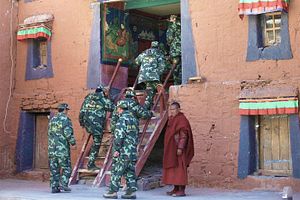In November 2016, the Dalai Lama went on a pastoral visit to the Buddhist community in Mongolia. While in Ulaanbaatar, His Holiness announced the recent rebirth of the Bogd Jebtsundampa or the Buddhist patriarch of Mongolia. His statement confirmed the revival of a lineage of reincarnated lamas (or tulkus) previously thought to have died out in the early 20th century.
The trip provoked a furious response from China’s Ministry of Foreign Affairs about Mongolia disrespecting China’s core values. However, Beijing left unmentioned its frustrations over the assertion of the Dalai Lama’s authority for the recognition of an important incarnate lama.
Since the 1990s, the Communist Party of China (CPC) has used its official interpretation of history and its legal system to contest the Dalai Lama’s ultimate authority over Vajrayana Buddhism, which is the branch of the Mahayana faith in the Himalayas, the Mongolian steppes, and the Siberian forest regions. By making this announcement, His Holiness proved the ongoing international reach of his clerical authority. The clash is the latest episode in a quarrel that has been going on for over 250 years between the Chinese state and the Vajrayana Buddhist community about the tulku reincarnation system.
A Reincarnation System for Monastic Authority
The tulku system is a Vajrayana theological doctrine based upon the Buddhist belief in reincarnation. According to Vajrayana Buddhists, a highly advanced lama has the power to direct the “internal energies” that make up his spiritual consciousness into a new being or even several new beings at the time of his death. Advanced lamas acquire this ability through the cultivation of compassion for all living beings and wisdom that pierces through materialism and falsehood.
When at death’s door, the lama leaves “clues” about his expectations for the whereabouts of his next rebirth. To pinpoint the locality, his followers seek guidance by consulting oracles, holding trances, interpreting signs of nature, or drawing lots after the lama’s passing. Once these clues have been assembled, the followers of the lama travel incognito to the locality indicated by the divinations and look for children who fit the prognostications. They interview candidates to see if a child can recognize former possessions or colleagues of the deceased lama or otherwise match the predictions.
Setting aside theology, secular historians contend that this doctrine indigenously arose in 13th century Tibet as a political mechanism to thwart aristocratic clans from asserting authority over monasteries and their property. In this view, the doctrine was meant to prevent a powerful clan from asserting a hereditary right to be the sole source for important reincarnations who held the ultimate authority in richly-endowed monasteries.

































